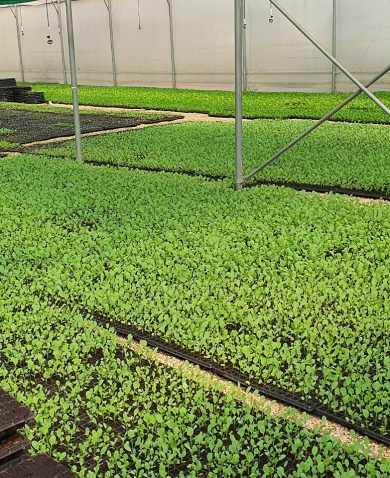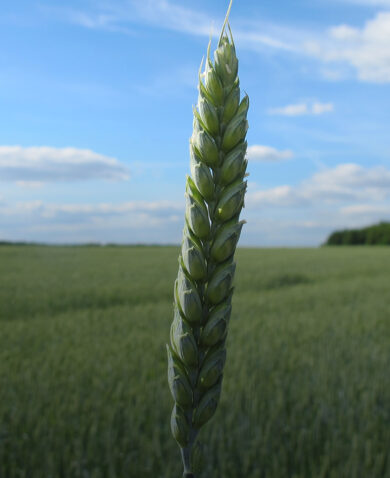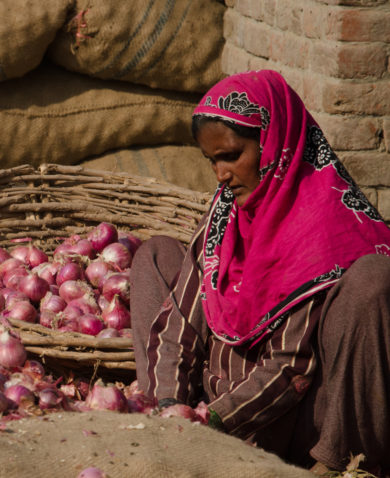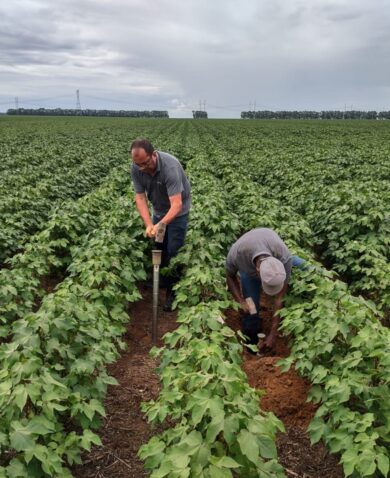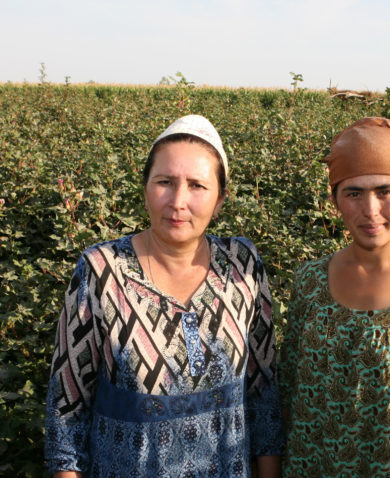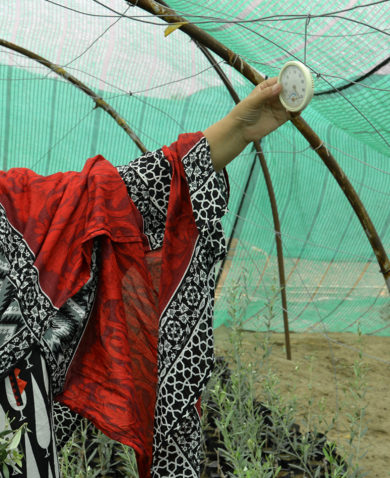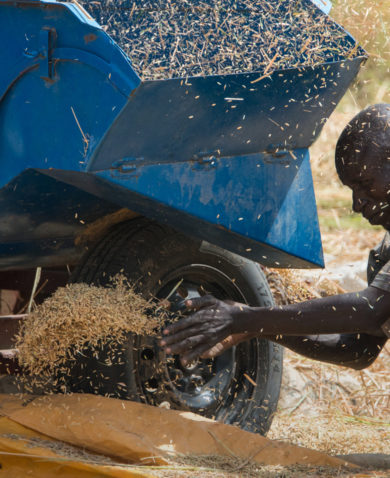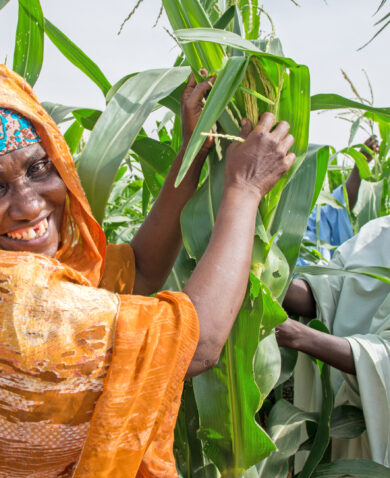
Services On Wheels: Transforming Uganda’s Maize Market
September 12, 2017 | 4 Minute ReadUganda is one of the largest exporters of maize in Africa, but quality maize is still hard to come by. Robert Anyang discusses using maize shelling to improve quality and regional exports.
In Uganda’s agricultural market system, the maize sub-sector is vital to national, community, and household food security. Uganda is the third-largest exporter of maize in Africa and second in maize flour, with exports dominating formal and informal export markets in East Africa, especially Kenya and South Sudan. A major issue for value chain actors, from village agents to exporters, is that quality maize is hard to come by even when farmers increase yields through improved seed, inputs, and technologies, despite the fact that exporters are willing to pay farmers a premium price for quality product.
To improve the quality of maize produced by farmers to meet buyers’ standards, the Feed the Future Commodity Production and Marketing (CPM) Activity looked to the market intermediary business models it supports, especially the buyer-linked village and village services agent model that extends farmer services and extension messaging down supply chains for improved production and marketing. Given the pervasiveness of poor-quality maize, it was clear that access to maize shelling services for unserved farmers was a priority. But how could village agents provide cost-effective access to farmers who often live off poor roads in remote locations that are not easily accessible? The answer came in the form of motorized mobile maize shellers — shelling services on wheels.
Why focus on maize shelling?
CPM, together with exporters and traders, identified that significant impacts on quality occur post-harvest because of the use of rudimentary tools and methods for shelling, which is the process where kernels are separated from the cob. Women, who already have significant duties in agricultural production, water collection, child rearing, and cooking, are responsible for this labor-intensive task. Traditional shelling uses sticks or is done by hand. Shelling one bag by stick takes eight hours of a woman’s time and leads to kernel breakage and contamination, contributing to post-harvest loss and reducing shelf life and value. Hand shelling to obtain kernels for maize seed produces unbroken grain but is tedious. A few kilograms can be shelled in an hour, taking a toll on shellers’ hands. In addition, the typical approach of drying maize directly on the ground and storing it in damp, warm conditions at the household level before and after shelling leads to deterioration, discoloration, aflatoxin growth, and further post-harvest loss. Given farmers’ remote locations, there are few accessible stationary maize shelling machine processors and limited financing for farming families to purchase household-level mechanical hand shellers. While small stationary maize shellers are trucked to farm communities, costs are passed on to farmers and this approach is not always feasible as many roads are impassable for trucks.
Mobile maize shellers were introduced in Uganda in 2012 by enterprising fabricator Munyegera Agro-Machinery with advice, training, and initial funding from NGO Sasakawa 2000. CPM, which began operations in 2013, monitored the initial effort with its maize sector exporter and trader partners, saw the potential, and got to work.
How does it work?
Mobile shellers have the capacity to shell two to three metric tons of maize per hour. Shelling a 100 kilogram bag takes 30 minutes and costs $0.56 to $.083, or 2,000 to 3,000 Ugandan shillings (UGX). In comparison, farmers pay women about $0.83 (3,000 UGX) to dehusk and shell a bag by hand, which takes about eight hours. In 2015, CPM cost-shared 70 mobile maize shellers with large traders and producer organizations linked to village agents to demonstrate benefits. Seeing the benefits, traders are investing in shellers and having their village agents operate them. Producer organizations have also purchased mobile shellers to provide services to their members. And, as village and village service agents begin to increase their incomes from farmer services, they too are buying shellers. A variety of CPM and non-CPM clients have acquired 420 mobile shellers. CPM worked with Munyegera Agro-Machinery to train operators in operations and maintenance, along with maize quality control methods (moisture meter use, proper drying on tarps, etc.), proper record keeping, and extension messaging.
Another positive impact is rural enterprise and job growth. Mobile sheller operation requires four to six workers, so whether by a self-employed agent or larger farmer service enterprise, youth are typically hired to operate and maintain shellers. Maize shelling offers roughly 120 annual workdays, two months during each maize season. Combining this work with other farmer services, such as input sales and planting, allows for full-time equivalent employment for village agents and rural enterprise staff.
With more cash in farmers’ hands from selling higher-quality maize and more time for women from this labor-saving technology, the value to farming families is being proven, while bringing increased maize quality, quantity, sales, and income to all those along the value chain.
What did we learn?
Proximity and affordability of shelling services lead to farmer uptake. Lower or equivalent costs for machine-shelled over hand-shelled maize, proximity to farmers’ fields, time savings, and premium price differentials make farmer uptake of this service an easy decision.
Financing is key to scale. Munyegera Agro-Machinery fabricates 20 maize shellers a month and requires financing to keep up with market demand. Traders and producer organizations need loans for equipment purchase. Meanwhile, village and village service agents are forming associations to access asset financing to purchase equipment for their businesses. A mobile sheller costs $1,900. It takes two seasons to break even on the cost based on an average shelling of 45 days of shelling per season and 120 bags shelled per day (the cost of shelling a bag is $0.73 and the profit margin per bag after deduction of variable cost is $0.41).
Multiple intermediary business models work. Three intermediary models are working well: trader-owned maize shellers operated by the trader’s village agents; shellers owned by producer organizations for member use; and shellers owned by village and village service agents to serve farmer clients. Ownership and operation depend on financial resources and existing and potential value chain actor relationships in an area. One size does not fit all.
Creating a pool of rural repair service providers must be prioritized. CPM and Sasakawa 2000 have initially helped defray costs of training operators. For the last year, operations and maintenance training has been provided by the fabricator embedded in the cost of the machinery. The next step is to work with the fabricator and technical and vocational education and training schools to empower more rural-based farm machinery repairers with skills to provide needed maintenance services.
In summation, several additional factors can incentivize intermediaries to offer mobile maize shelling services. These are:
- Prove the profitability of the service (automated mobile maize shelling, in this case), to traders, farmer organizations, and village and village service agents.
- Gain buy-in and investment from exporters, who in turn promote intermediary models that bring services such as maize shelling closer to farmers.
- Finance the fabrication of mobile maize shellers to meet demand.
- Finance purchase of mobile maize shellers for traders, farmer organizations, and village agents.
- Provide access to operations, maintenance, and maize quality control training for operators.




